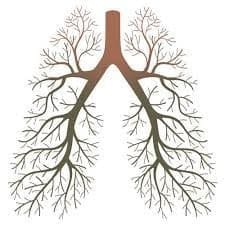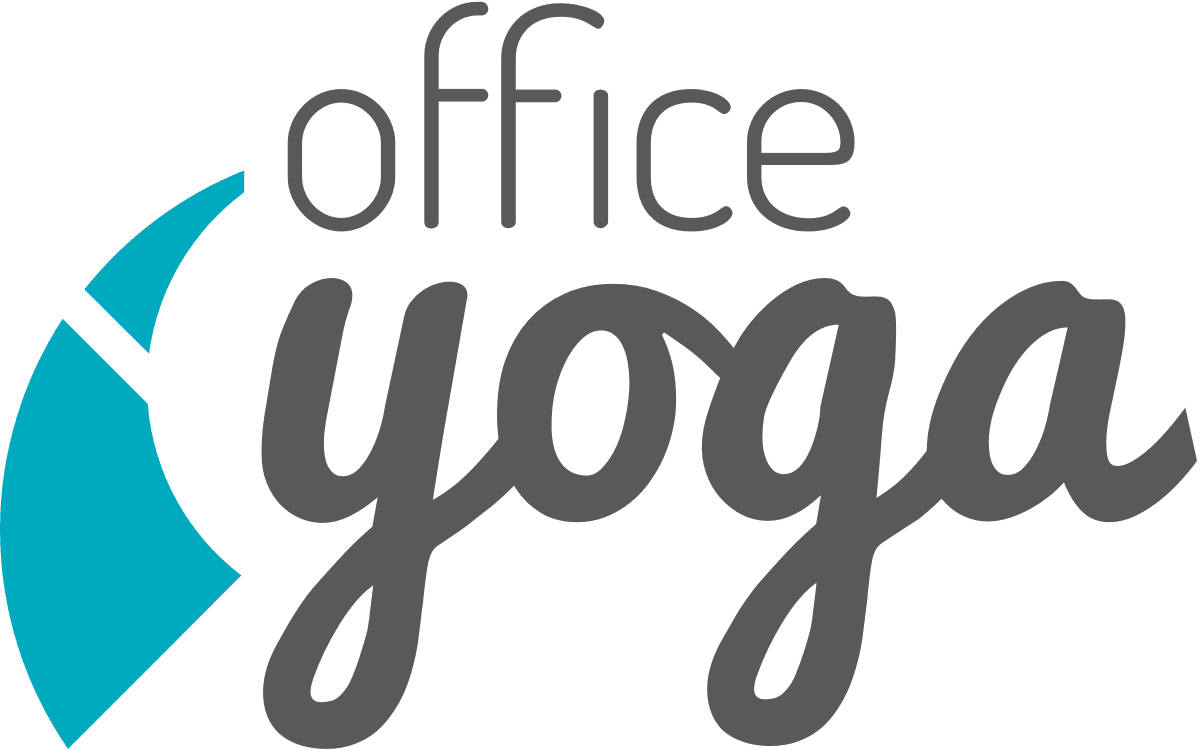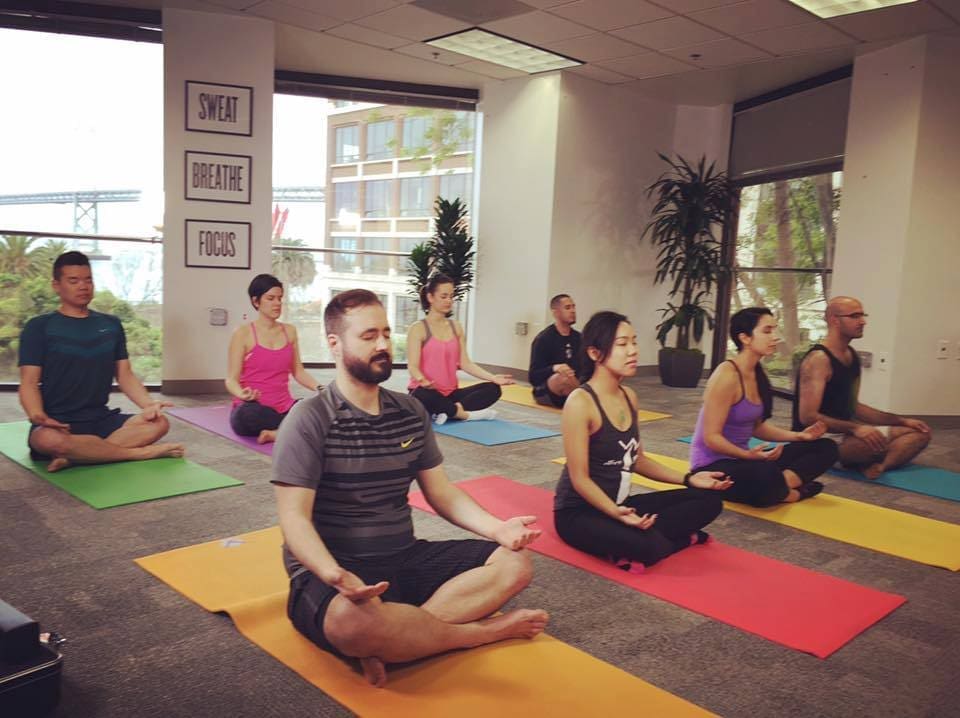Bring it Back to the Breath
Benefits of yoga breathing on mind and body
One fundamental aspect of yoga and meditation is maintaining focus on the breath. Yoga breathing, or pranayama, is an ancient, 3,000 year old traditional Eastern practice that has many applications to today’s problems in stress, health, and wellbeing.
There are many specialized patterns and techniques of pranayama – such as breathing deeply into the belly, breathing against airway resistance, breathing through different physical poses, holding the breath at varying times in the breath cycle, or varying breath through one or both nostrils – with each technique having slightly different functions and effects.
In Office Yoga®, we use various breathing techniques to meet the conditions of the employees at that moment. Often people walk in feeling feeling anxious, tired or stressed and we use breath work will help bring their system back to balance so they can focus on the task at hand.
 Recent scientific studies on the ancient tradition of pranayama show its capacity to increase both physical and mental health – in the short term and in the long term. More specifically, pranayama, along with related practices such as yoga and meditation, can activate the parasympathetic nervous system. The parasympathetic nervous system regulates autonomic bodily functions, such as heart rate, blood pressure, digestion, and breathing. Breath is the only autonomic function that can easily be controlled voluntarily – thus it operates as a portal through which one can self regulate and often correct imbalances in stress response mechanisms that commonly lead to poor health.
Recent scientific studies on the ancient tradition of pranayama show its capacity to increase both physical and mental health – in the short term and in the long term. More specifically, pranayama, along with related practices such as yoga and meditation, can activate the parasympathetic nervous system. The parasympathetic nervous system regulates autonomic bodily functions, such as heart rate, blood pressure, digestion, and breathing. Breath is the only autonomic function that can easily be controlled voluntarily – thus it operates as a portal through which one can self regulate and often correct imbalances in stress response mechanisms that commonly lead to poor health.
Let’s see how pranayama can have positive effects on longevity, quality of life, and optimal brain function for Office Yoga® employees-
Increased Longevity
Recent clinical studies have shown that breath exercises can affect long-term longevity mechanisms. Neuro-immuno-endocrine factors associated with stress and aging, such as inflammation, insulin and cortisol dysregulation, oxidative damage, and neural degeneration, can be altered through yoga breath practices. Preliminary findings of a 2006 study conducted by N.L. Pan suggest that the practice of pranayama can increase neurogenesis, neuronal repair, and neuroplasticity, as well as enhance immune system function. These factors, which can be improved upon by pranayama, are all implicated in longer, healthier lives.
Increased Quality of Life
 Work-related stress and exhaustion increasingly limit our productivity and even hinder our capacity to enjoy life. We see this often in Office Yoga® when the company is going through big changes. Mind-body interventions, such as office yoga, meditation, and breathing practices, can drastically improve mental and physical stress-related disorders including depression, anxiety, PTSD, asthma, high blood pressure, cardiac illness, elevated cholesterol, irritable bowel syndrome, cancer, insomnia, multiple sclerosis, and fibromyalgia.
Work-related stress and exhaustion increasingly limit our productivity and even hinder our capacity to enjoy life. We see this often in Office Yoga® when the company is going through big changes. Mind-body interventions, such as office yoga, meditation, and breathing practices, can drastically improve mental and physical stress-related disorders including depression, anxiety, PTSD, asthma, high blood pressure, cardiac illness, elevated cholesterol, irritable bowel syndrome, cancer, insomnia, multiple sclerosis, and fibromyalgia.
Additionally, studies have shown that voluntarily changing breath patterns can account for almost 40% of the variance in feelings of emotions such as anger, fear, joy, and sadness. Yoga breathing, in activating the parasympathetic nervous system, can induce altered levels of consciousness, leading to increased empathy and emotional regulation in general. Individuals who practice pranayama have reported increases in mindfulness, compassion, happiness, gratitude, confidence, and a sense of general peace and understanding, leading to an overall increase in quality of life.
Optimization of Brain Function
 Yoga breathing, meditation, and yoga – acting as neurophysiological “work outs” can lead to increased focus, clarity, flexibility, creativity, mental stamina, and productivity. Students claim themselves that they feel more productive at work and more content overall after Office Yoga® sessions. Studies have shown that yoga breathing can optimize brain functions. EEG (electroencephalogram) recordings taken after yoga breathing exercises show characteristic synchronous brain activity, usually present only in the recordings of expert meditators. This increase in synchronous rhythmic activity has been associated with increased critical thinking, problem solving, and overall brain function.
Yoga breathing, meditation, and yoga – acting as neurophysiological “work outs” can lead to increased focus, clarity, flexibility, creativity, mental stamina, and productivity. Students claim themselves that they feel more productive at work and more content overall after Office Yoga® sessions. Studies have shown that yoga breathing can optimize brain functions. EEG (electroencephalogram) recordings taken after yoga breathing exercises show characteristic synchronous brain activity, usually present only in the recordings of expert meditators. This increase in synchronous rhythmic activity has been associated with increased critical thinking, problem solving, and overall brain function.
Yoga breathing – a simple mind-body intervention that can be practiced anywhere, anytime – has been associated with a longer, healthier, happier life. Follow these guidelines today to try it out for yourself! Happy breathing ☺
For further reading – including a historical context of pranayama and extensive references to scientific studies discussed – please check out this article by Richard Brown & Patricia Gerbarg.
To try Office Yoga® classes at your workplace, contact info@officeyoga.com for class options and scheduling.
Written by Suraiya Luecke – Bachelor of Neurobiology; Bachelor of Public Health; Minor in Global Poverty & Practice – UC Berkeley
Copyright © 2017 by Office Yoga®. All rights reserved.

